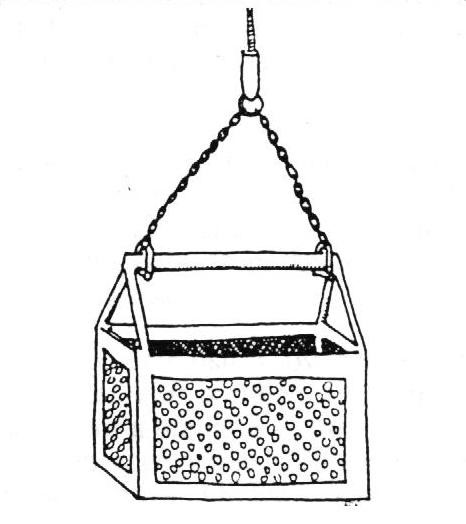
Research Vessel Yellowfin
Scientific Equipment – Biological Collection

Otter trawls are used to sample fish that live on or near the bottom of soft sediment habitats. The wide mouth of the net tapers into what is called the “cod end” and the net is held open by two “otter boards” that are made of wood. The net is lowered from the stern of the boat and is usually towed for a maximum of 10 minutes at 1.5-2 knots. The animals recovered from the trawl are deposited in the sorting bin on the stern deck for students to observe and identify.
Otter trawls require that the cruise leader holds a Scientific Collection Permit. The terms of the SCP require that the permit holder record ALL fish that cross the deck of our vessel, whether or not they are kept. Recording the numbers and species is the responsibility of the permit holder/cruise leader, not SCMI crew. The SCMI crew can help identify species if needed, and you can use your students to help count.

Isaacs-Kidd Midwater Trawl
Samples: Midwater fishes and invertebrates
Isaacs-Kidd midwater trawls will sample the ocean between 200 and 1,000 meters (110-545 fathoms) deep. The trawl is lowered to approximately 550 meters at a location that is two-thirds of the way across the San Pedro Channel and trawled for 1-2 hours. To get to this depth and distance, an IKMT trip needs at least 6 hours. Organisms that reside at this depth are very different from shallower species and have developed interesting adaptations to compensate for the lower light levels of the environment.
Otter trawls require that the cruise leader holds a Scientific Collection Permit. The terms of the SCP require that the permit holder record ALL fish that cross the deck of our vessel, whether or not they are kept. Recording the numbers and species is the responsibility of the permit holder/cruise leader, not SCMI crew. The SCMI crew can help identify species if needed, and you can use your students to help count.

Van Veen Grab
Samples: Sediment
Van Veen grabs are deployed from the stern of the ship to collect sediment samples from the sea floor. It is important to note the temperature, odor, texture, and color of the sediment samples.

Biological Dredge
Samples: Invertebrates & substrate
Biological dredges sample the substrate and benthic organisms that live on the rock sea floor. The dredge is composed of a heavy rectangular, metal frame that is approximately 2 feet wide. It is dragged slowly at the bottom for five minutes at the speed of 0.5 knots. The region dragged on the R/V Yellowfin cruises is called “The Rock Pile” and is an area on the shelf outside of Los Angles Harbor where Miocene rocks (12-15 million years old) project through underlying recent and Ice Age sediments. Most pebbles in the Rock Pile are smooth and rounded, due to heavy wave action in historical times.

Horizontal Plankton Tow
Samples: Zooplankton